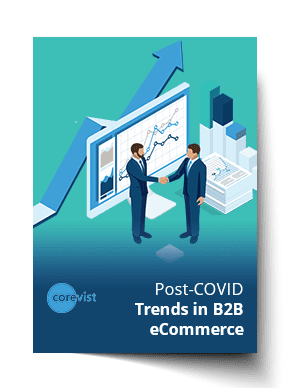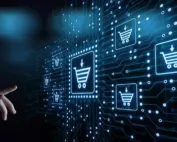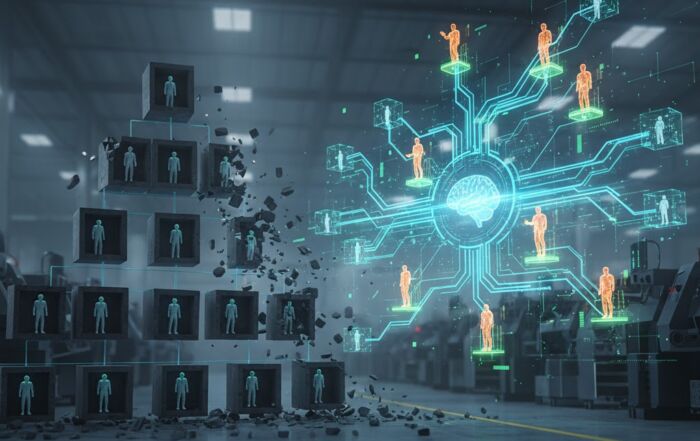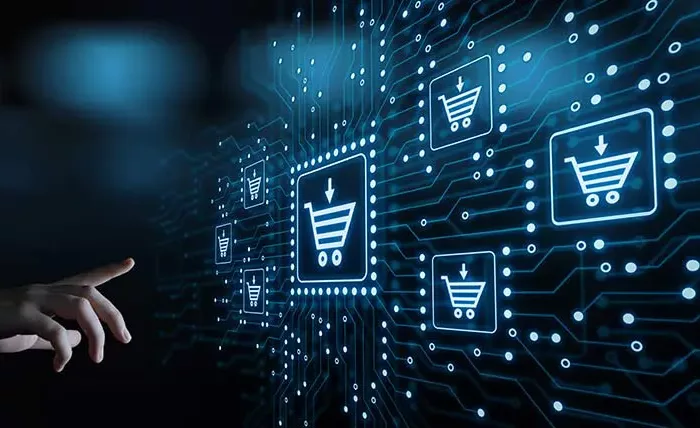Share
Author
George Anderson
Share
What’s happening in B2B eCommerce as the pandemic approaches its second birthday?
To answer this question, the Australian B2B eCommerce Association recently conducted a survey of 400 B2B buyers and sellers. Responses were quite revealing, with strong takeaways for manufacturers who have yet to enter the B2B eCommerce game.
Here are 3 insights that stood out to us.
1. B2B eCommerce is the #1 sales channel
The survey asked respondents, “How do you usually place your orders?” The largest proportion, 69%, reported purchasing online through a business.
That’s in contrast to only 40% who call or email a sales rep—and only 21% who buy through a sales rep who meets with them in person.
This should come as no surprise, especially given the impact of COVID-19 on B2B sales channels. Early in the pandemic, McKinsey reported that the massive digital shift in B2B buying would probably stick. That’s proving true so far—and it has massive implications for manufacturers who still rely on phone, fax, and email ordering. If you aren’t doing business online in some format, you’re significantly lagging behind your competitors.
But it’s not enough to throw together an online storefront or feed your products to Amazon Business. Manufacturers’ channel partners need specific digital experiences if they’re going to complete purchases.
Which leads us to our second takeaway.
2. Don’t bother with online interaction if it isn’t real-time and personalized
The survey asked respondents to rank the most important factors they consider when making purchases. Here’s what they came up with (in order).
- Price
- Product availability
- Product quality
- Product service expertise
- Fast delivery
This gets more complicated for manufacturers. How do you get pricing right when every distributor or dealer has their own unique, negotiated contract pricing?
How do you offer dependable, real-time inventory availability in your B2B portal? Just like pricing logic, that information lives in SAP ERP.
Of course, you can’t control product quality and service expertise when building a digital channel. But you can offer delivery transparency if your SAP ERP system is set up to offer RDDs (requested delivery dates) and your portal is integrated to SAP.
As you can see, SAP integration is the key to creating a personalized customer experience in your B2B portal. This is why all Corevist solutions include our 53 prebuilt, configurable SAP integration points.
In fact, manufacturers are often surprised at how much business logic they have in SAP that they can reuse in a B2B portal. While there are many examples of this, one stands out in particular: Allowing customers to source product from multiple locations.
Which leads us to our next takeaway.
3. If you offer different sourcing options, your B2B portal should offer them, too
One finding of the survey might look insignificant—but it’s actually important for manufacturers.
Respondents were asked, “How has COVID-19 impacted your purchasing decisions?”
55% said they purchase more online (which isn’t surprising). 33% said they were more price-conscious. But here’s the interesting stat: 28% said they pay more attention to country of origin.
There’s an important takeaway here for global manufacturers with more than one sourcing location. If you have multiple warehouses, you may consider displaying these options in the B2B portal and giving customers a choice.
This is especially important in the wake of COVID-19, as shipping disruptions are affecting the entire global economy. If your dealers and distributors need orders to arrive by specific dates, you don’t want a lack of transparency to lead to a customer relations problem. Give buyers full visibility into their sourcing options within the portal, and they’ll have greater confidence that their order will arrive on time.
The takeaway: Focus on the customer’s most critical needs
COVID is driving manufacturers to eliminate bloat and focus on what matters most. In customer experience, that means B2B portals that deliver essential capabilities to customers while leaving “nice-to-haves” on the table (for now).
The key here is to identify that essential functionality that customers need most. For manufacturers, it’s usually things like real-time inventory availability, personalized pricing, full order and invoice history, and online payments. All of these things depend on comprehensive SAP integration, which is why Corevist Commerce includes it on Day 1.
NEW Research:
B2B eCommerce Trends Emerging Post-COVID
Here’s where B2B eCommerce is going in 2021 and beyond: widespread shift to digital, Agile preferred, and more. Read now.










